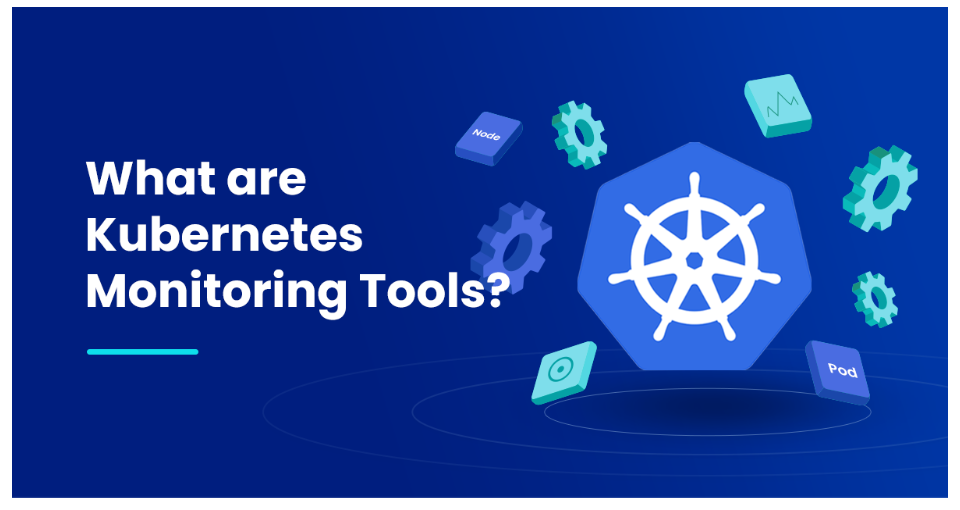In the ever-evolving landscape of containerized applications, Kubernetes has emerged as a powerful orchestration tool. As Kubernetes deployments grow in complexity, ensuring the availability and performance of the clusters becomes paramount. This is where Kubernetes monitoring tools come into play. These tools enable real-time visibility into the health, performance, and resource utilization of Kubernetes environments. In this blog post, we will explore the significance of Kubernetes monitoring tools and highlight some of the popular options available in the market.
The Need for Kubernetes Monitoring:
As organizations embrace Kubernetes for managing their containerized applications, it becomes essential to have robust monitoring mechanisms in place. Kubernetes monitoring tools provide valuable insights into the performance and stability of clusters, allowing administrators to proactively identify and resolve issues before they impact the application’s availability.
Key Features of Kubernetes Monitoring Tools:
Effective Kubernetes monitoring tools offer many features that empower administrators to monitor and manage their clusters efficiently. These features may include real-time CPU and memory utilization monitoring, network traffic, storage performance, and container health. Additionally, they provide insights into the Kubernetes cluster’s resource allocation, enabling administrators to optimize resource utilization and ensure cost efficiency. Alerting and notification systems are also common features, allowing administrators to receive alerts when specific thresholds are breached, enabling quick remediation.
Popular Kubernetes Monitoring Tools:
- a) Prometheus: Prometheus is a widely adopted open-source monitoring tool that has gained popularity in the Kubernetes community. It offers a flexible and scalable solution for collecting metrics and monitoring Kubernetes clusters. With its rich query language and extensive ecosystem, Prometheus enables administrators to build custom dashboards and alerts based on their specific requirements.
- b) Grafana: Grafana is a powerful visualization and monitoring tool that integrates seamlessly with Prometheus and other data sources. It provides a user-friendly interface to create customizable dashboards, graphs, and alerts, allowing administrators to visualize the health and performance of their Kubernetes clusters.
- c) Datadog: Datadog is a comprehensive monitoring and analytics platform supporting Kubernetes monitoring and other infrastructure components. It provides out-of-the-box integrations, allowing administrators to gain deep insights into their Kubernetes environments, including performance metrics, resource utilization, and container-level monitoring.
- d) Sysdig: Sysdig offers a container intelligence platform that includes Kubernetes monitoring capabilities. It provides granular visibility into the containerized environment, helping administrators troubleshoot issues, perform root cause analysis, and ensure compliance. Sysdig also offers anomaly detection and machine learning-based insights to identify and prevent potential problems.
Importance of Kubernetes Monitoring:
Kubernetes monitoring is critical in ensuring the stability, availability, and performance of containerized applications. Let’s explore the importance of Kubernetes monitoring in more detail:
- Proactive Issue Detection and Resolution: Kubernetes monitoring enables administrators to proactively identify and address issues before they impact end users. Administrators can detect anomalies, bottlenecks, or resource constraints by monitoring key metrics such as CPU and memory utilization, network traffic, and application performance. This proactive approach minimizes downtime and ensures a smooth user experience.
- Optimize Resource Allocation: Monitoring resource utilization within a Kubernetes cluster is essential for optimizing resource allocation. By analyzing metrics like CPU and memory usage, administrators can identify underutilized or overutilized resources and make informed decisions to scale applications or adjust resource allocations. This helps achieve better efficiency and cost-effectiveness in managing the infrastructure.
- Scalability and Capacity Planning: Kubernetes monitoring provides insights into the overall health and performance of the cluster, which is crucial for scalability and capacity planning. By tracking node capacity, pod scaling, and application responsiveness metrics, administrators can identify when additional resources or scaling actions are required. This ensures that the cluster can handle increased workload demands without compromising performance.
- Meeting Service-Level Agreements (SLAs): In a production environment, meeting SLAs is paramount. Kubernetes monitoring allows administrators to monitor application performance metrics such as latency, throughput, and error rates. By setting up alerts and thresholds, they can be promptly notified when SLAs are at risk of being violated. This enables timely interventions and ensures that service levels are consistently met.
- Troubleshooting and Debugging: In complex Kubernetes environments, troubleshooting and debugging issues can be challenging. Monitoring provides valuable insights into the behavior of containers, pods, and cluster components. By examining metrics and logs, administrators can pinpoint the root cause of issues, track down errors, and facilitate faster resolution. This reduces the mean time to detect (MTTD) and mean time to resolve (MTTR) for incidents.
- Security and Compliance: Kubernetes monitoring is crucial for maintaining the security and compliance of containerized applications. Administrators can identify potential security breaches or policy violations by monitoring and analyzing metrics related to network traffic, access controls, and application behavior. This allows for timely remediation actions, enhancing the overall security posture of the Kubernetes environment.
- Continuous Improvement: Monitoring provides valuable data and insights to be leveraged for continuous improvement. Administrators can identify patterns, fine-tune configurations, and optimize resource allocation strategies by analyzing historical metrics and performance trends. This iterative process ensures that the Kubernetes environment evolves and adapts to changing requirements and performance expectations.
In conclusion, Kubernetes monitoring is of paramount importance in modern IT operations. It empowers administrators to detect issues proactively, optimize resource allocation, ensure compliance, and continuously improve the performance and availability of containerized applications. By implementing effective monitoring practices, organizations can unlock the full potential of Kubernetes and reap the benefits of efficient container orchestration.












